
In This eNewsletter:
• Squeezing the Music 'til the Bits Squeak, by John Atkinson
• This Month's Strangest Audio URL, from Wes Phillips
• International News, by Ken Kessler
• Audio Beginnings, by Wes Phillips
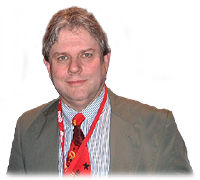 By John Atkinson By John Atkinson
I write these words mere hours after returning home from Home Entertainment 2005, the Show cosponsored by Stereophile magazine that took place from April 28 through May 1 at the Manhattan Hilton. You can find Wes Phillips' and Stephen Mejias' daily coverage of the Show on the Stereophile home page; a full report will appear in the August issue of the magazine. HE2005 was an upbeat affair, the majority of exhibitors presenting good sound at levels that, in general, were nowhere near deafening—a welcome trend. But for me, an essential aspect of the Show that had been relatively neglected at our 2004 event was the inclusion of live music. Not only did XM Satellite Radio sponsor a well-attended concert Friday night featuring that quintessential jam band, Medeski Martin + Wood, but there was a superb support act as well: torch singer Holly Palmer backed up by Mojo Mancini, a band that includes that most tastefully powerful of rock guitarists, John Leventhal (Shawn Colvin, Rosanne Cash). And there was a continuous program of live performances throughout the Show's three public days. My thanks to: the jazz trio led by guitarist Tony Ormond; blues singer Deanna Bogart and her band; folk singer Kevin Mileski; the band led by singer Pamela Lewis and guitarist John Hurley; Hip Hop & Classical ensemble Nuttin But Stringz; jazz singer-pianist Tony DeSare (courtesy Telarc International); my colleagues in my jazz trio, pianist Bob Reina and drummer Allen Perkins; and, most important for me as his producer, Canadian pianist Robert Silverman, who previewed his forthcoming Stereophile CD/SACD with a blistering Saturday-afternoon performance of Beethoven's monumental Diabelli Variations. An important function of the live music program is to allow Showgoers to recalibrate their ears with the real thing. But the emerging paradox is that, even as playback equipment reaches new heights of transparency and musical accuracy, the recordings we play on our equipment are increasingly compromised in sound quality. I first wrote several years ago about the sonic disaster resulting from heavy-handed compression. Things are now, if anything, worse. I hasten to add that I refer to rock and popular music—classical recording, led by companies such as Channel Classics, ECM, Pentatone, and Hyperion, is currently enjoying a quietly underpromoted golden age of sound quality. But as one of the judges for the CEA's new Demmy Awards, a scheme intended to recognize the technical excellence of the audio and video recordings used to demonstrate gear, I grew increasingly depressed as I auditioned the contenders in all categories that had been nominated by attendees at the 2005 Consumer Electronics Show. (The Demmy Awards ceremony, where the winners will be announced, takes place May 14 at the Professional Audio/Video Retailers Conference, now organized in conjunction with the CEA.) Yes, there were superb examples of the modern recording art—the Tony Faulkner/Andrew Keener collaboration on the Florestan Trio's recording of French music for piano trio, for example (Hyperion SACDA67114)—but many of the nominees dated from an earlier, pre-digital age: tracks from Pink Floyd's Dark Side of the Moon, John Coltrane's A Love Supreme, Derek & the Dominos' Layla, Elton John's Goodbye Yellow Brick Road, Muddy Waters' The Folksinger, Frank Sinatra's Live at the Sands 1966, and the Grateful Dead's American Beauty. I mean, come on. Yes, these are all great recordings, but they were all laid down on analog tape before Stereophile writer Stephen Mejias was even born. And when I listened to a modern recording that had been nominated, the aggressively compressed and equalized "Lose My Breath," from Destiny's Child's Destiny Fulfilled—which CES attendee nominated this piece of sonic excrement?—I felt like shutting down the system, going outdoors, and listening to some silence. Again perhaps paradoxically, it was the DVD Music Video/Concert category that provided the best examples of modern recorded sound. "Narrow Daylight," from Diana Krall's Live at the Montreal Jazz Festival, and "Lido," from Boz Scaggs' Greatest Hits Live, both have excellent dynamics and clean, natural balances. In fact, the recording I've been listening to most over the past few weeks is not an SACD, not a DVD-Audio, not a Dual-Disc, not a CD, and not even an LP—it's the live double DVD-Video of Eric Clapton's Crossroads Guitar Festival (Reprise R2 70378). Great music, great sound, great atmosphere, great musicians—dammit, I love ZZ Top—and as far as I could tell on the 15" LCD monitor set up between and behind my speakers, great video. As I wrote last November, the true replacement for the CD medium is not a hi-rez audio-only medium but the live concert DVD. Now that's a medium worth an award in itself. |
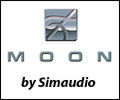 |
Simaudio Ltd. Simaudio Ltd., celebrating 25 years of excellence, manufactures state-of-the-art components for both 2-channel and home-theater systems. Maintaining a world-class reputation, we continually push the performance envelope to the next level with each new product. Visit us at www.simaudio.com. |
||||
|
From Wes Phillips
Acoustic Radar? www.dself.dsl.pipex.com/MUSEUM/COMMS/ear/ear.htm. Bonus URL: How many references can you jam into a single song? www.kleptones.com/music/bo.mp3. |
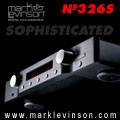 |
Mark Levinson Mark Levinson, established in 1972, is a world-renowned manufacturer of the finest stereo and multi-channel electronics. Products range from awe-inspiring monaural power amplifiers to the industry benchmark CD processor. For more information on all Mark Levinson products, please visit www.marklevinson.com. |
||||
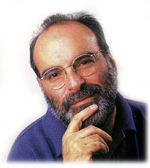 By Ken Kessler By Ken Kessler
FRANCE: Audio Research debuts 600W amplifier
Now it turns out that the 2005 event, held in April, marked a distinct change in the attitude of French consumers. To everyone's great surprise in this land of Cahiers du Cinéma, there has been a backlash against home theater, and the show was bursting with two-channel-only systems, turntables, tubes, and vinyl. Although only recently revived, Salon Hi-Fi Home Cinema is already prestigious enough to have attracted a handful of major "scoop" launches worthy of any international gathering. Most impressive was the first-ever showing—or, as Jean-Marie put it, "La premiere mondiale"—of the most daring power amplifier ever produced by Audio Research. Philippe Demaret of Europe Audio Diffusion hosted the launch of the floorstanding Reference 610T monoblock, a monster rated at a minimum of 600W into loads of 4, 8, or 16 ohms. (The T stands for "Tower.") With a push-pull, fully balanced vacuum-tube circuit using sixteen 6550C output tubes, the 610T needs only two 6L6GC driver tubes, each controlling a bank of eight 6550Cs. Input gain is provided by a pair of 6N1P dual-triode tubes and a 6H30 follower tube. Although 16 power tubes seems a daunting prospect for ownership, ARC has designed the 610T to be painless to use, and it boasts a much simplified tube-biasing system: only two adjustments are needed instead of the 16 required in the REF600 series. Moreover, the projected tube life is approximately 2000 hours.
Power-supply energy storage is a "whopping 1000 joules," according to ARC, with extensive film-cap bypassing of all electrolytics. In addition , interstage coupling caps are the new proprietary types first used in the Ref 3 preamplifier. The power-supply rectification is solid-state, while a total of six regulators are used for tube regulation of the input stage, with five additional solid-state regulators. Inside the 610T is a massive, custom-made output transformer, an ultrawideband device designed for a high damping factor and excellent current delivery. Signal input is balanced only, with separate output taps for 4, 8, and 16 ohm speaker loads. Accounting for the new topology, Audio Research states that, "With the 610T, we decided to rethink the chassis from the ground up. Unlike previous Reference amplifiers, which required abundant floor space and multiple fans for cooling, the 610T is a striking vertical design with tubes projecting above an anodized top plate. The advantages of this design allow easier, next-to-speaker installation, silent convection cooling and better weight distribution." Inside the tower are three different levels of circuit function. At the lowest level are the power and output transformers, on the second level are the power-supply storage and regulation, and on top are the input and output tubes. Amusingly, a ventilated top cover with quiet Pabst fans is optional for pain-in-the-butt CE compliance. But ARC feels that "Most owners will want to see the tubes in all their glory, and enjoy the benefits of silent convection cooling." Naturally, ARC believes that the unit will set new sonic standards, akin to the Ref 3 preamp's gains over the Ref 2 Mk.II. The first units ship this month. Reviewers: the queuing starts now.
ITALY: Giffone Valle Piana
Unusually, given the irrational hatred for the technique, the V.F. is, as its name suggests, direct-driven. S.A.P. has chosen a brand-new type of five-phase stepping motor, controlled by sophisticated electronics housed in a separate chassis. The turntable uses a magnetic isolation system between motor and platter and sits on four of S.A.P.'s opposed-magnet Relaxa Feet. Like the Relaxas, which are available separately or as part of an equipment platform, the leather mat and the clamp will be made available as accessories, "to improve the performance of any other turntable." In Europe, S.A.P. will sell the turntable on its own for &#euro;7500, but has been seen demonstrating it with a 12" SME 312 tonearm bearing a specially modified EMT cartridge. The package price, including SME arm and S.A.P./EMT MC-1 cartridge, is &#euro;10,000. S.A.P. will sell you the cartridge on its own for &#euro;1625, but note that it is supplied only as fitted in an SME 300-series headshell. More info from sapmkt@tin.it. |
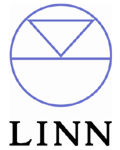 |
The Linn Unidisk 1.1 How to audition the only product to receive three Stereophile Product Of The Year Awards in 2004!:
• Stereophile Joint Product of the Year 2004 To find your nearest Linn dealer for an audition of this remarkable product, email: helpline@linninc.com |
||||
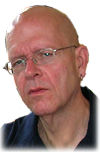 By Wes Phillips By Wes Phillips
Audio Beginnings
In the ramp-up to HE2005, my e-mailbox has filled with press releases announcing new products and new companies, and that always makes me wonder: Where does all this stuff come from? I mean, I have lots of ideas—I feel like Butch Cassidy: "I have vision, and the rest of the world wears bifocals." But there's a huge gap between having a good idea and starting a company that successfully gets that idea out in front of the public. And, I suspect, there's an even greater gulf between getting a product out there and actually making a living at it. The great thing about this job, though, is that I don't have to just ponder such questions. The press pass in my fedora's hatband means I can actually call people up and ask 'em about it. The first generation of audio pioneers is sadly disappearing from the landscape, so I couldn't call Saul Marantz or Avery Fisher, but I could talk to Lew Johnson of Conrad-Johnson, one of the companies that can legitimately be said to have created the current high-end scene, back in the mid-1970s. At that time, the idea that there might be hand-built audio separates that were based on tube circuits seemed almost heretical. I don't know which concept will be more alien to you young 'uns out there—that in 1975 there was no High End or that there was no tube gear. Either way, C-J is one of the companies that changed that. Lew Johnson remembers the beginnings of Conrad-Johnson: In 1975, Bill Conrad and I met when we were both economists at the [Federal Reserve]. Bill was assigned to write a commentary on a research paper I had written, and for about four months or so, that was the basis of our relationship. It wasn't until we both attended a Christmas party that we discovered that we were both into Marantz and Dynaco and the tube gear of the time. We just thought it sounded better. We were just typical audiophile types doing the "You show me your system and I'll show you mine" thing, and we did a little comparing and arguing over what was better than what—and then we exchanged preamplifiers. We were interested to discover significant differences between Bill's preamp and mine, and we began to speculate about why that was. It occurred to us that it might be possible to combine the best properties of our two components and have a preamplifier that we were both really happy with. Bill has an extraordinary facility for determining what things are actually going to cost, and we reckoned we could make a product we could actually price competitively. At first this was an intellectual exercise, but after a week of discussion, we started taking it pretty seriously—and then we spent all of 1976 learning how to build a preamplifier and literally building one from scratch. I made a chassis out of a flat sheet of aluminum and made my own printed-circuit boards, and Bill and I did all the circuit design work. That's how the original Conrad-Johnson Preamplifier was born. How did you turn C-J into a real business? With a lot of false starts and a lot of sweat and tears. We spent all of 1976 building the prototype and most of the first half of '77 ordering the bits and pieces and finding someone to assemble it for us, since we didn't have any facilities. We were finally able to incorporate and start selling our first pieces in June of '77. It took roughly six years for us to be able to quit our other jobs. Do you think you could do it today? Knowing what I know today, I probably wouldn't attempt it! It's a very different world out there. We were present at the creation of the second golden age of audio, and there's a very different landscape out there today. It would be much harder for a startup company. Chris Sommovigo recalls how he started Illuminati and Stereovox: Chris Sommovigo was present at the creation, too, only he was present at the creation of the Internet as an audio force to be reckoned with. Ironically, he became involved in the High End because of a claim that he thought made no sense. Chris Sommovigo: I was a participant on The Audiophile Network bulletin-board server back in the early days of the Internet, and someone on TAN suggested that a digital cable could make a difference. Now that offended me. I had an Audio Alchemy DDD and a Luxman transport and I was pretty happy with them. So this guy sent me some cable that I thought was awful—but that meant it sounded different, and that meant that digital cables did make a difference. So I began talking to John Bauer, a microwave engineer I found through the Yellow Pages, and through him I met a lot of folks doing work in that field. Eventually, John and I came up with the Datastream Reference cable—having basically learned that you needed to match the load to the cable and the connectors. So John, my parents, and I cobbled together $7500 and Illuminati was born. Our first marketing idea was a truly hideous direct-mail brochure—I saw one when I moved some boxes recently and I was so embarrassed. We bought 6000 addresses from Larry Archibald at Stereophile and we stuffed envelopes for days. We got 25 checks and I felt on top of the world. That first connector design failed, on a physical level, so I had to replace every one of 'em. That whole time, I was working other jobs and doing Illuminati stuff at night. The turning point occurred around two years in, when we finally got 20 dealers, which is right about the time Ray Kimber noticed us and we merged Illuminati's digital cable line into Kimber's analog line. Later, I sold Illuminati to Ray and I moved back to Georgia and just took some time off. I'd always had ideas about analog cables, but let's face it, Ray Kimber didn't need me for that, so I had to wait until I was on my own. I spent two to three years doing R&D and making recordings with my partner, Tony de Almeida. That was during a very healthy economic climate, so it really made sense to design a no-holds-barred product and trickle down the technology later. Lo and behold, when we released our SEI interconnects in 2000, the stock-market bubble burst and we sold practically nothing. That nearly killed us. So here we are five years later and we're finally offering our affordable cables [the Studio series]. What's interesting is that the Studio series placed design constraints on me that forced me into a mode of thought that I might not have achieved if I'd started with the idea of creating an economical product first. Having the SEI cables as a benchmark meant I had to shoot for a certain level of performance—and I'm not sure I would have wound up in the same place if I'd designed the Studios purely from the point of view of reaching a particular price point. John DeVore explains how DeVore Fidelity came to be: DeVore Fidelity is a young company, but at Home Entertainment Shows and CESes over the last half decade, its products have pulled down critical kudos and consumer raves that more established companies would kill for. I asked John DeVore how he came to be in the biz. John Devore: My whole family is musical, and I grew up in a household where my mother and my sister were always performing chamber music. Unfortunately, all of the instruments I gravitated towards were a little too annoying for my mom—I was a drummer and trumpeter. My mom wasn't going to dissuade me from being a musician, but her discomfort when I practiced was pretty obvious. I got the hint and developed my art more than my music, but it was always around. I was into hi-fi in junior high—more into how cool it was than how it sounded, really. However, by the time I went to college, I had begun to realize that you could get pretty good sound out of a stereo system, so I started spending a lot of time in hi-fi shops, where I came to two realizations: 1) I could never afford the stuff that came close to sounding like live, and 2) that even the stuff that came close didn't come that close. I went to an art college, so, around 1986, it occurred to me that I could build a loudspeaker and receive credit for it at the same time. Being an obsessive perfectionist, I designed an over-the-top, isobaric, push-pull, cylindrical-enclosure loudspeaker with a complex crossover. It taught me a lot, and it even did some things better than the speakers I had heard in stores—and some things a lot worse, because I did tackle so many issues in one project. After graduating, I lived in L.A., and then I came to New York and was constantly, constantly building loudspeakers. I got a reputation in my circle as a builder, which allowed me to sell my projects to friends and friends of friends. I didn't actually make a profit, but it meant I could experiment without it costing me too much. I became more serious about it and began building some custom studio monitors, and I was commissioned to build some studio systems, which was fun, but also somewhat frustrating. In 1995, I built a speaker that encapsulated all the work that had come before it—or perhaps I should say I came up with the crossover circuit that I had been evolving. It was a small two-way, but it was the first use of my Gibbon crossover and I recognized that it was something quite different from all of the speakers I had previously heard. That's when I began to seriously think about the models I would have to develop if I wanted to start my own company. That first Gibbon evolved into the Gibbon 3 bookshelf. It was 1999 before I built the first version of the Gibbon 8, but once I had those two models, I could go into stores and be taken seriously. I was able to give up my day job earlier than I might otherwise have done because my wife was working and had an open mind. I'm paying for it now because she's writing her book, but that's fair. Dusty Vawter of Channel Island Audio: Dusty Vawter is the classic American tinkerer. When Supreme Court Justice Souter referred to "the guy in the garage" during the oral arguments of the recent Grokster case, the image the phrase evoked in my head was of Dusty Vawter, soldering iron in hand. When I asked Vawter how he'd come to the audio industry, he couldn't recall a time when he wasn't already involved in it. But he did have some advice for anyone considering it as a career. Dusty Vawter: You better love what you do. I'm a music nut and I love this stuff, but I wouldn't recommend it to anybody looking for a business where they can make a lot of money. The way I think about it is that I sacrifice the money part of it for being able to do what I love. I feel lucky that I'm able to make my house payment and my car payment and that my wife puts up with stereo equipment strewn all through my house, but you know, when somebody buys one of my products and then calls me up and tells me that they've never heard their music sound so good, that makes everything okay. |
| To unsubscribe, simply reply to this email with the word 'unsubscribe' in the subject or body of the email. |
| Subscribe To This Newsletter • Stereophile Home Page |
| Print & Web Media Kit • Privacy • Contact Us • Letters to the Editor |
| Subscribe to Stereophile Magazine |
| Copyright © Primedia Magazines, Inc. All rights reserved. |